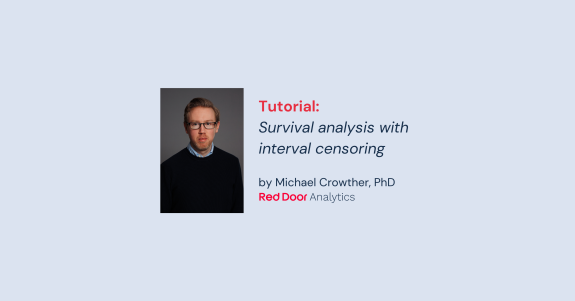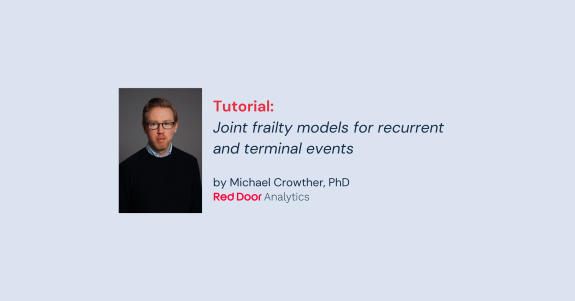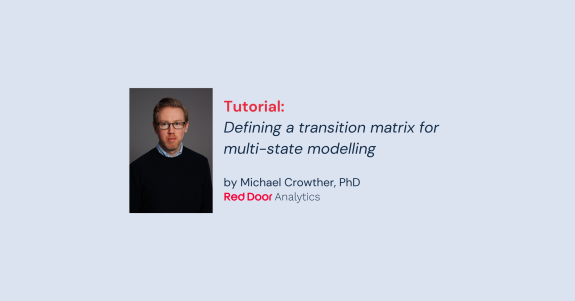Take a look at our freely available resources library, covering entry-level and advanced topics
RDA RESOURCES
Scroll Down

Survival analysis with interval censoring
Interval censoring occurs when we don’t know the exact time an event occurred, only that it occurred within a particular time interval. Such data is common in ophthalmology and dentistry, where events are only picked up at scheduled appointments, but they actually occurred at some point since the previous visit. Arguably, we could say all survival data […]
Learn more Relative survival analysis
Relative survival models are predominantly used in population based cancer epidemiology (Dickman et al. 2004), where interest lies in modelling and quantifying the excess mortality in a population with a particular disease, compared to a reference population, appropriately matched on things like age, gender and calendar time. One of the benefits of the approach is […]
Learn more Flexible parametric survival analysis with frailty
This example takes a look at incorporating a frailty, or random intercept, into a flexible parametric survival model, and how to fit them in Stata. First we’ll use merlin to estimate our model, and then the more user-friendly wrapper function stmixed. More details on these models can be found in the following papers: Crowther MJ, Look MP, Riley […]
Learn more A user-defined/custom hazard model
This tutorial will illustrate some of the more advanced capabilities of merlin when modelling survival data, but with the aim of using an accessible example. During my PhD, Paul Lambert and I developed stgenreg in Stata for modelling survival data with a general user-specified hazard function, with the generality achieved by using numerical integration to calculate the cumulative hazard […]
Learn more Joint longitudinal and competing risks models: Simulation, estimation and prediction
This post takes a look at an extension of the standard joint longitudinal-survival model, which is to incorporate competing risks. Let’s start by formally defining the model. We will assume a continuous longitudinal outcome, $$y_{i}(t) = m_{i}(t) \epsilon_{i}(t)$$ where $$m_{i}(t) = X_{1i}(t)\beta_{1} + Z_{i}(t)b_{i}$$ and \(\epsilon_{i}(t)\) is our normally distributed residual variability. We call \(m_{i}(t)\) our […]
Learn more An introduction to joint modelling of longitudinal and survival data
This post gives a gentle introduction to the joint longitudinal-survival model framework, and covers how to estimate them using our merlin command in Stata. A joint model consists of a continuous, repeatedly measured (longitudinal) outcome, and a time-to-event, with the two models linked by random effects, or functions of them. Let’s formally define everything we need. For […]
Learn more Joint frailty models for recurrent and terminal events
In this post we’re going to take a look at joint frailty models, and how to fit them with our merlin command. Importantly, we’ll also discuss how to interpret the results. Joint frailty models An area of intense research in recent years is in the field of joint frailty models, which has become the commonly used name for […]
Learn more Simulation, modelling and prediction with a non-linear covariate effect in survival analysis
Let’s begin. There will be a single continuous covariate, representing age, with a non-linear effect influencing survival. We’ll simulate survival times under a data-generating model that incorporates a non-linear effect of age. We’ll then fit some models accounting for the non-linear effect of age, and finally make predictions for specified values of age. Sounds simple, […]
Learn more Defining a transition matrix for multi-state modelling
In this post we’ll take a look at how to define a custom transition matrix for use with our multistate package in Stata. The transition matrix A transition matrix governs the movement of a process between possible states. Within multi-state survival analysis, and particularly, the implementation of multi-state models in Stata, the transition matrix contains the most […]
Learn more 








